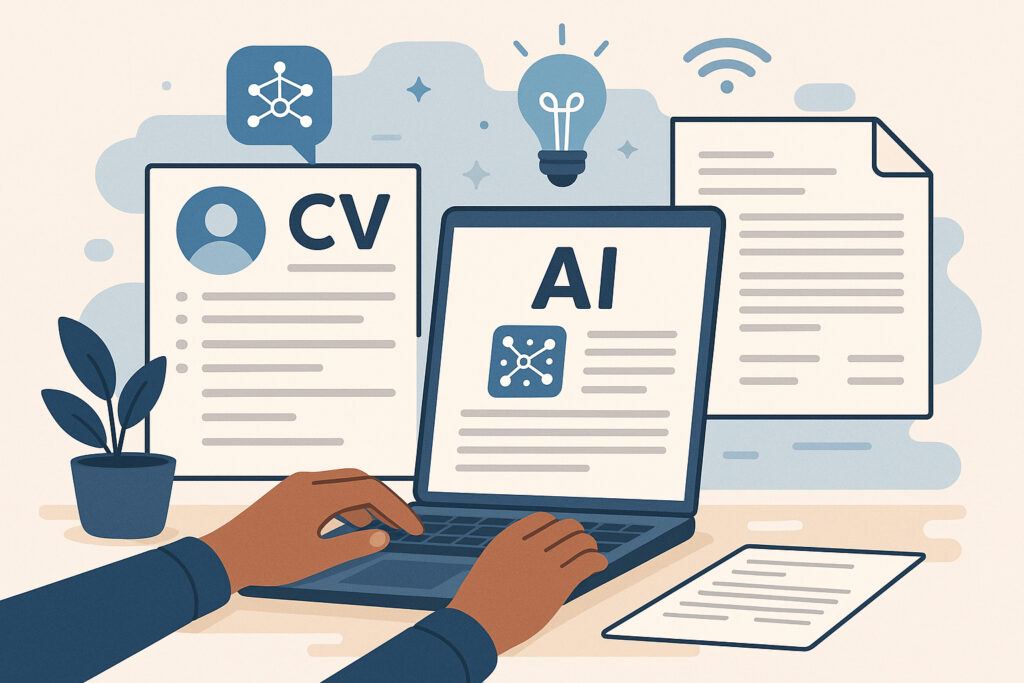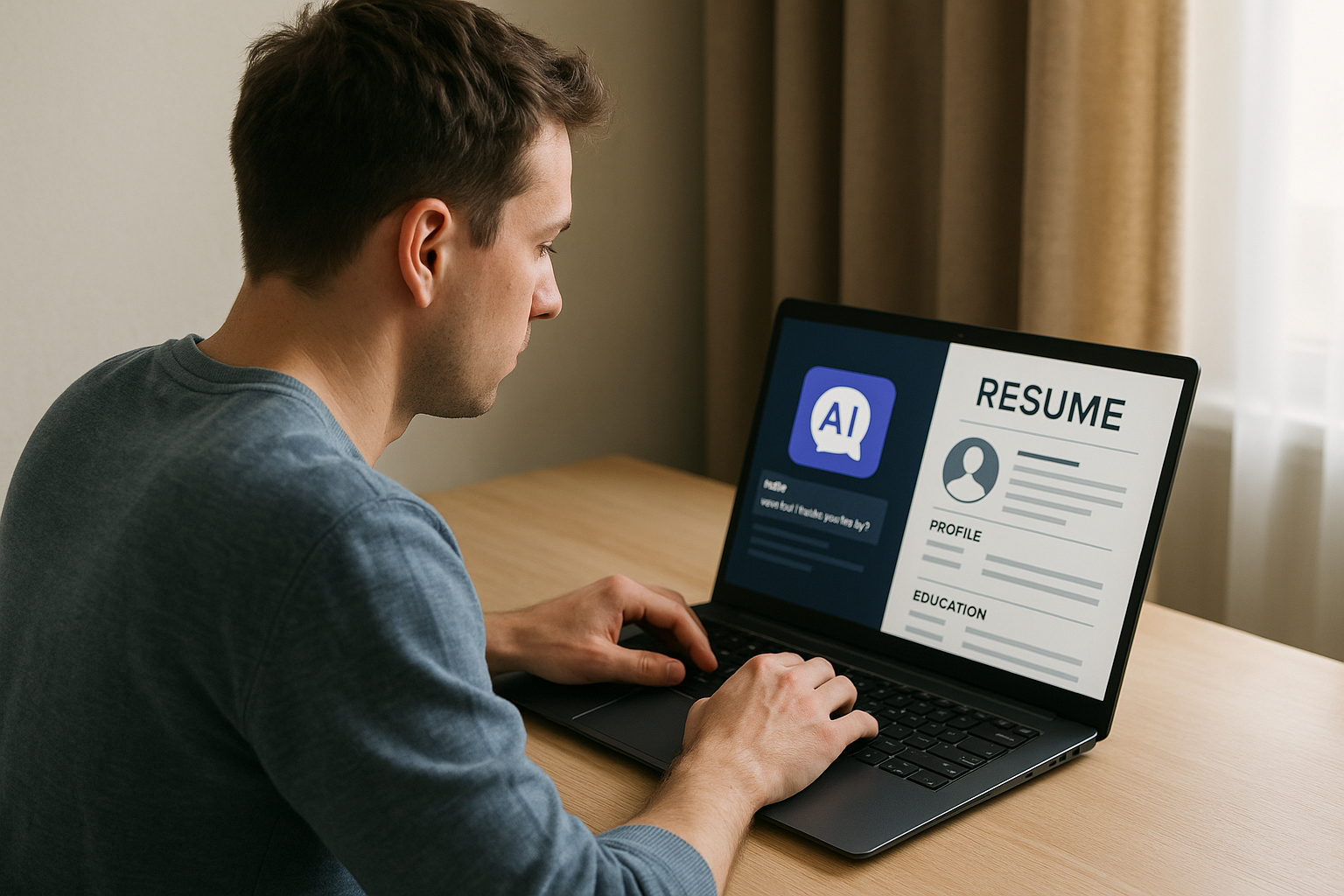AI on Your Resume And Motivational Letter - Here's What To Do And Don’t Do
In years when AI is rapidly transforming the job application process, job seekers are increasingly turning to tools like ChatGPT, Gemini, and other large language models to help them craft resumes, cover letters, and motivational letters. It’s efficient, easy, and often impressive on the surface. But recruiters can often tell when AI has had a heavy hand in crafting your application and it may be hurting more than helping your chances.
Recruiters aren’t necessarily biased against AI-assisted applications. In fact, many of them use AI themselves for initial resume screening. The issue is how AI is used and whether it replaces your authenticity with overly polished, generic content that lacks personality, specificity, and human depth.
Let’s unpack why this matters, what signs give AI-generated resumes away, and how you can use AI intelligently without losing your credibility or voice.
AI in Job Applications: A Growing Trend with Subtle Risks

The pressure to stand out in today’s hyper-competitive job market is real. With a struggling global economy and many companies scaling back hiring, even a single open role can attract hundreds of applications. In this circumstances, candidates feel the need to optimize every sentence, include every relevant keyword, and polish their documents to perfection.
AI makes this incredibly easy. In minutes, you can generate a full resume summary, rewrite all your bullet points, and compose a motivational letter that seems persuasive, at least to the untrained eye.
But experienced recruiters read dozens of resumes a day. Over time, they develop an intuition for what sounds “human” and what sounds like a machine-generated script. They aren’t just looking for proper formatting or error-free sentences, they’re looking for depth, clarity, individuality, and truth.
How Recruiters Identify AI-Generated Resumes
- Overuse of buzzwords: Words like “synergistic,” “driven,” “proven track record,” or “results-oriented professional” are useful only when tied to clear context. Without supporting detail, they feel hollow, and AI tends to overuse them.
- Lack of specificity: AI often produces generalized achievements that sound nice but say very little. Statements like “led successful marketing campaigns that boosted brand awareness” mean little unless you quantify the impact or describe the strategy.
- Uniformity of tone and structure: When every section of a resume sounds exactly the same – same sentence length, tone, pacing, and vocabulary, it suggests a templated output. Humans typically vary their expression, however AI often doesn’t unless prompted deliberately.
- Inclusion of unrealistic or incorrect claims: Some applicants, trusting AI too much, allow it to fabricate experiences or exaggerate skills. Recruiters notice when a junior applicant claims experience leading enterprise transformations or managing $10 million budgets.
- Strange phrasing or formatting anomalies: AI doesn’t always get the context right. Sometimes it misuses technical terms, formats inconsistently, or leaves behind prompt fragments like “[insert metric here]” — clear giveaways that a human didn’t fully review the document.
- Over-Usage of dashes „—“: AI has the tendency to overuse a sentence structure with a dash (instead of a comma). On top of that, it often uses the long dash instead of the short one – a clear sign AI had its hands in the game.
- High-contextual versus low-contextual language codes: Countries with a high-contextual language code communicate very indirect and assume a strong understanding of context and cultural background. These countries are e.g. Japan, China, Arabian countries, South America, India. Countries with a low-contextual language code use a very explicit and clear wording. No interpretation is needed here. Examples for these countries are: Switzerland, Germany, Netherlands, USA.
Why It Matters: More Than Just Style Points
- Credibility: If your resume sounds too good to be true, recruiters may assume it is. Even if you’re qualified, you risk undermining your authenticity — a quality that hiring managers value more than ever.
- Interviews become riskier: If you can’t confidently explain or elaborate on the language in your resume or motivational letter, you’ll falter when questioned. Remember: the resume gets you the interview, but you get the job.
- Loss of individuality: As more candidates rely on AI, applications are starting to sound the same. The irony is that the tool meant to help you stand out can actually make you blend in.

- Reputation: Especially in fields that prize ethical behavior healthcare, education, law, non-profits. There may be long-term reputational risks if it’s discovered that your application misrepresented your skills or experience, even unintentionally.
What Recruiters Actually Want to See
- Honesty and transparency: If you’re early in your career or pivoting into a new field, that’s okay, what matters is your ability to articulate your story clearly.
- Evidence of impact: It’s not enough to say you “led a project.” What was the outcome? What problems did you solve? How did the organization benefit?
- Voice and personality: A cover letter or motivational statement that reflects your genuine tone, even if slightly less polished, often resonates more than a flawless but soulless AI-generated draft.
- Curiosity and initiative: Mentioning how you researched the company, how you align with its mission, or what excites you about the role shows effort and authenticity.
Using AI the Right Way: Enhancing, Not Replacing
- Start with your own content: Write a rough draft of your experience, projects, and achievements in your own words. Then use AI to help you rephrase, condense, or clarify.
- Use AI to identify patterns, not write your narrative: For example, feed it a job description and ask what skills are most important. Use that insight to tailor your resume manually.
- Review everything carefully: Never submit an AI-generated resume or letter without carefully proofreading and editing. Make sure it reflects your true experience and abilities.
- Preserve your voice: Read your motivational letter out loud. Does it sound like something you would say? If not, rewrite it until it does.
A Motivational Letter That Reflects the Balance
- Start with Self-Reflection (Not a Prompt)
Before you open ChatGPT or another tool, ask yourself:
- Why am I applying to this company specifically?
- How doesthis role align with my experience or values?
- What achievements am I proud of, and how do they connect to this job?
- What do I hope to learn or contribute?
Write down rough notes. These are the raw materials of your letter.
- Use AI for Structure, Not Substance
You can ask AI to suggest an outline or structure for your letter. For example:
- How to open the letter in a professional tone
- How to transition between your background and the company’s mission
- How to end with a clear call to action
But don’t let AI fill in the content without your input. The examples and motivations must come from you.

- Be Specific.Always.
AI tends to generalize. You need to personalize in order to attract, gain attention and bonus points. Do your research, find out what does the company you are applying for, special projects they’ ve ran, upcoming ones etc. It is always better to show engagement and credibility, as well as appreciation, rather than just generalizing some facts.
- Focus on One or Two Real Achievements
Don’t try to fit your entire resume into the letter. Pick 1–2 relevant accomplishments that highlight your skills or values. Briefly explain:
- What the situation was, what you did, what were the result?
Use numbers or results if possible. AI can help rephrase this more clearly, but you need to supply the facts.
- Speak in Your Natural Tone
Read your letter out loud. Does it sound like you? Or like a resume-writing bot from 2025? Aim for clarity, not perfection, your tone should reflect how you’d speak in a professional conversation, on your future interview in person.
- Show That You’ve Done Your Research
Companies appreciate when applicants mention:
- A recent product launch
- A company value or culture point
- A public initiative or community program
This shows genuine interest — and AI won’t know what recent event matters unless you tell it.
- Always Review and Revise
Never send an AI-drafted letter without reviewing it. Double-check for:
- Inaccurate statements
- Grammar or formatting issues
- Overused buzzwords
- Unnecessary repetition
If it doesn’t reflect your experience or intentions, delete it — no matter how good it sounds.
Let AI Help, But Let You Speak
We’re entering a new era of job searching — one where AI will continue to shape how we present ourselves. But amid all the automation, one thing remains unchanged: people still hire people.
Your resume and motivational letter should reflect you — your experiences, your challenges, your growth, and your aspirations. Use AI to assist, not replace. Use it to sharpen your message, not fabricate it.
Because at the end of the day, when you walk into that interview room (whether virtually or in person), it’s not the AI talking — it’s you.
So let your voice be heard.


